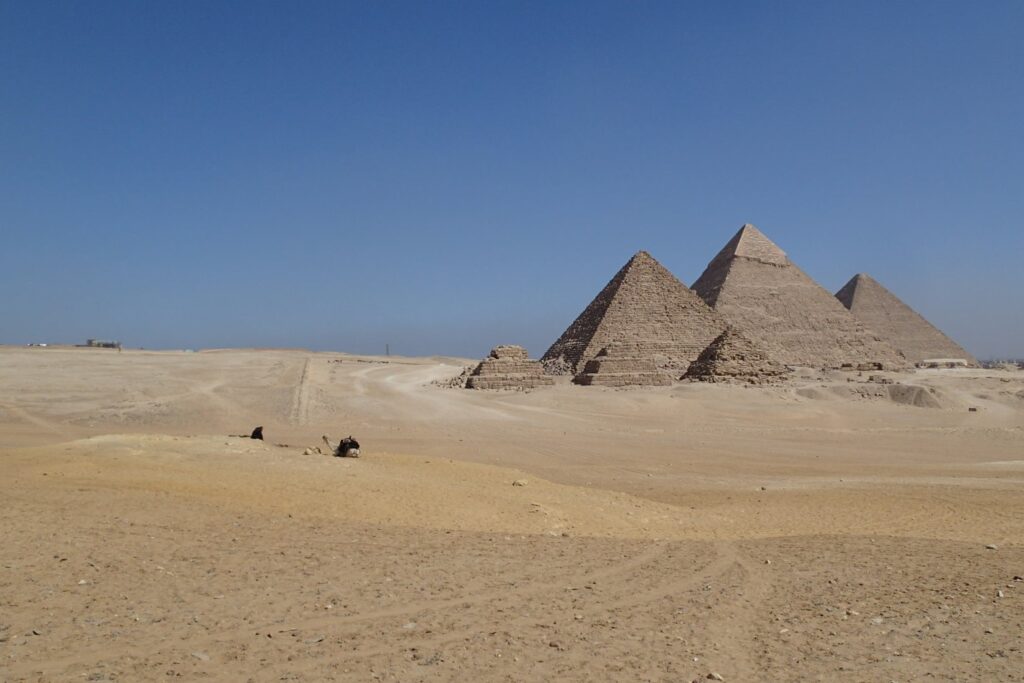
Having spent the first day of my visit to the Pyramids of Giza getting a feel for the place, and venturing inside the Pyramids of Khufu and Khafre, I returned the following day ready for some wider exploration. I must admit to not knowing a great deal about the historic reserve before my visit, thinking it was all about the three big triangles and the Sphinx. I was amazed, and a little embarrassed, to discover there was a lot more to it than that. I started the day having a look around Khufu’s giant pyramid.
The ancient Egyptians were very thorough when it came to preparing their revered leaders and loved ones for the afterlife. The mummified dead were joined in their tombs by a whole bunch of things that it was assumed they would need. These included food, small statues of workers and servants to look after the labour duties, furniture, sandals, games (for those long, rainy Sunday afternoons), and even underwear. Let’s face it, I think we’d all like to start eternity in a clean pair of jocks.
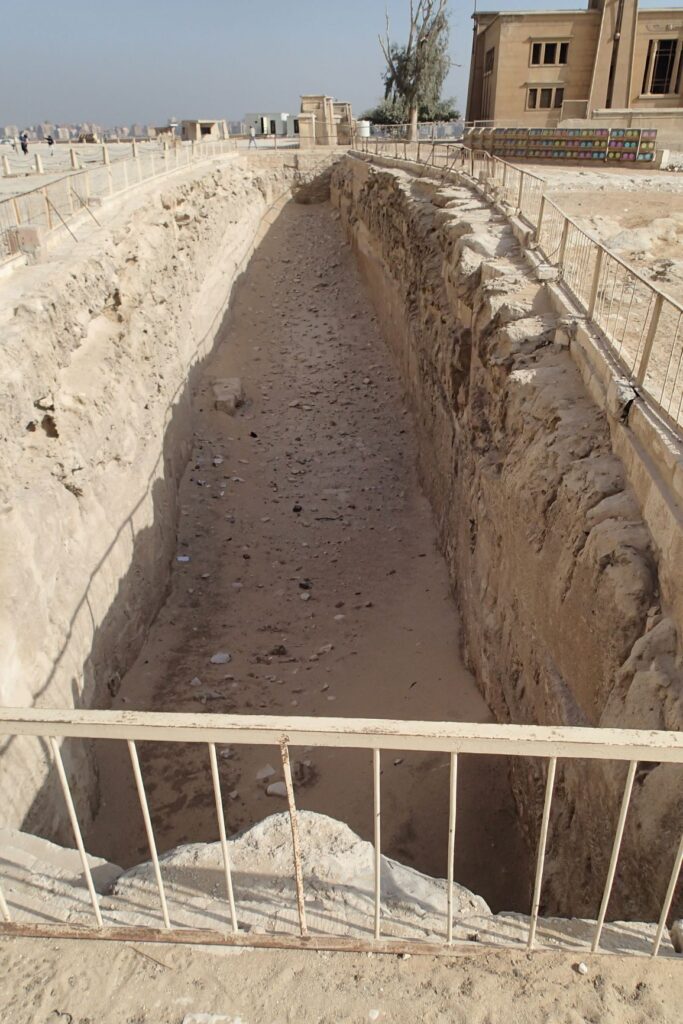
The question of how to get the deceased to the afterlife was also solved by providing them with a boat. This could take the form of a small model that was included in the funerary goods, or a huge vessel that may also have been used to transport the mortal form to its final resting place. On the southern and eastern side of Khufu’s Great Pyramid, archaeologists found massive pits where the ancient Egyptians buried massive ships. A vessel found on the southern side is being prepared for exhibition in a new pavilion.
This bloody big pit held a bloody big boat
Within the Pyramids of Giza precinct, rope fences have been installed to keep you out of certain areas. However, these barriers are not continuous, and depending on which direction and path you take, you may end up on one side of the fence or the other. Consequently it’s hard to figure out what is off limits and what is not. To the east of Khufu’s monument, three smaller pyramids were built for the King’s two wives and his mum. I was wandering around these structures when a voice called out behind me. Turning, I saw one of the management security staff approaching me.
He told me I was not permitted in the area, and that I would have to go back the way I came. I told him that was no problem and started off. He called me back, and pointing to a feature nearby, began to explain its significance. After his short spiel he asked me for money. As I mentioned in my previous post, being pressured to hand over cash happens nearly constantly at the Pyramids. Although I do not want to dwell on this unfortunate fact, not mentioning it at all would give an unrealistic impression of the place being a friendly and tranquil tourist wonderland.
I said to the employee ‘you just told me off for being in the wrong place, and now you’re asking me for money?’ He persisted with his demands. ‘But mate you work here! You’ve gotta be kidding me!’ I walked off. I’ll leave it at that, but suffice to say I could fill an entire post with examples of dishonesty, low-level corruption, fraud and pressure to give out money that I experienced at the Giza Plateau.
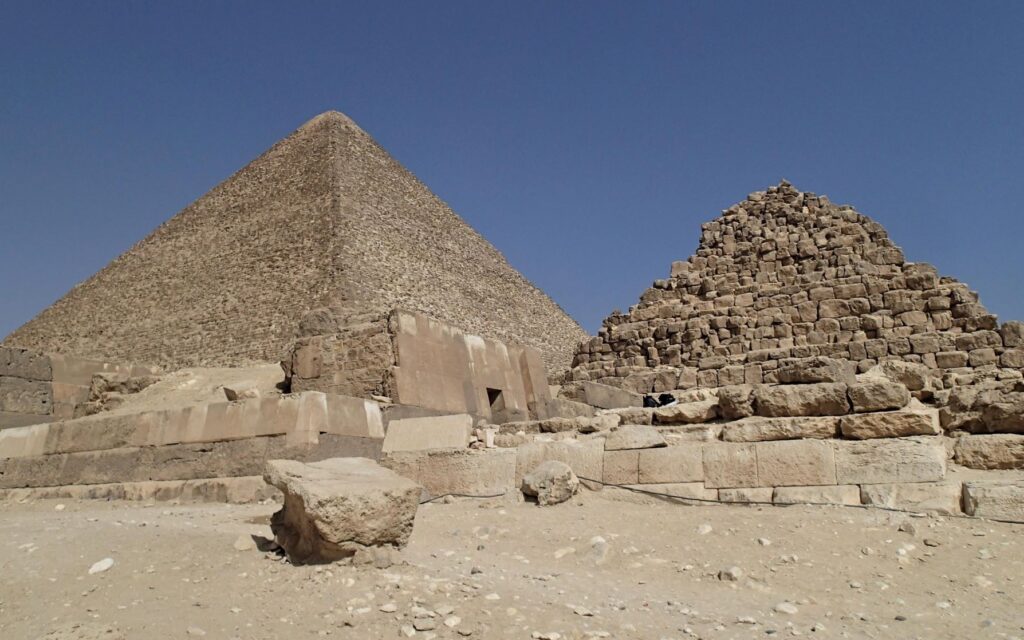
South East of the Great Pyramid sits the Sphinx, which, despite losing its nose sometime over the ages, still cuts a commanding presence. To get up close to this magnificent statue, you enter through the Valley Temple of Khafre. Not one to spare expense when it came to building monuments to himself, Khafre had the limestone structure covered with red granite all the way from Aswan.

Once hidden beneath the sand, the Sphinx now lies majestically, facing east, watching the rebirth of the sun god every morning.
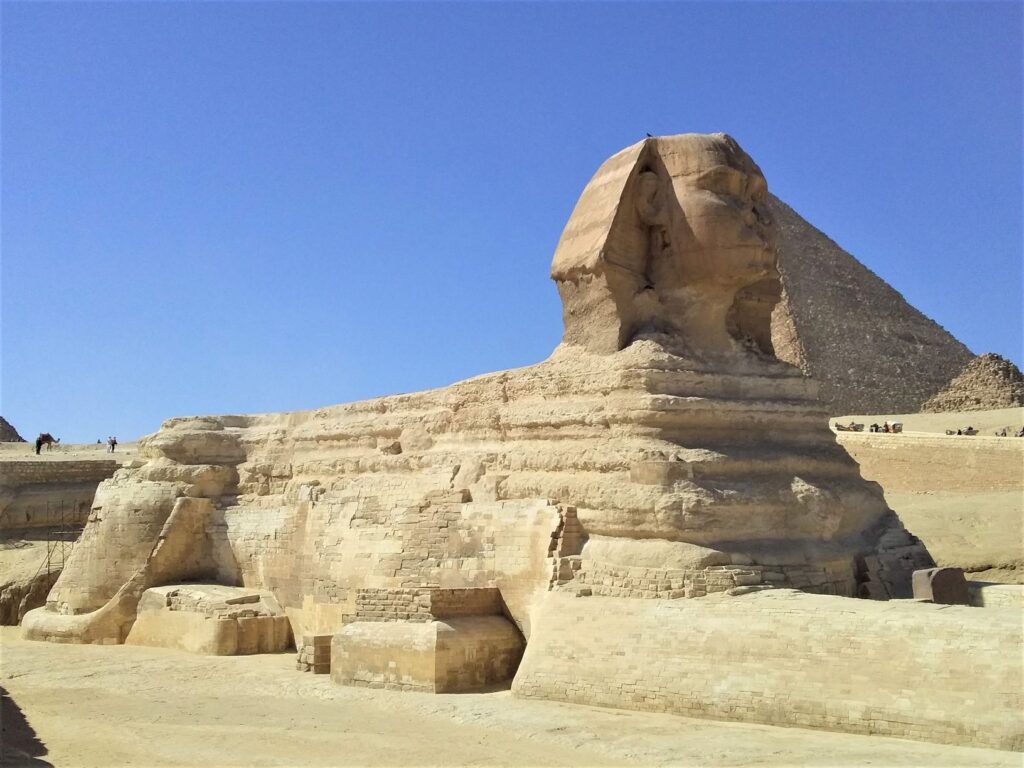
It was Friday, a weekend day in Egypt, and although foreign tourists were scarce the locals were out in force. Keen to escape the hustle and hassle of the prime tourist spots for a while, I decided to walk south across the desert to some higher ground that affords a great view of the Pyramids. Most visitors are carried across the sand to the lookout point via horse or camel, but I felt like a walk. Arriving at the small shade shelter, I had the place, well, to myself.

Although Cairo is lapping at the edge of the Pyramids of Giza complex, to the south-east lies the desert. The views from my personal shelter were spectacular.
After enjoying the solitude, I headed back across the sand to the smallest of the Big Three Pyramids. This belongs to King Menkaure, thought to be the son of Khafre and grandson of Khufu. Although Menkaure’s monument wasn’t as big as that of his old man or grandpa, he wasn’t afraid splash the cash for his own glorification. Shunning the fine limestone, Menkaure had the lower part of his Pyramid cased in Aswan red granite.

Similar to Khufu’s set-up, three small pyramids are located at the base of Menkaure’s. These are believed to belong to his queens. The whisper around the wadi is that of his queens, one was his sister, and another his half-sister. Keeping it in the family was not uncommon in ancient Egypt.
South of the main Pyramid complex the land slopes downwards, and contains a huge amount of sites. I spent hours exploring this area without another tourist around, and at times I wondered if I was supposed to be in the area. There were no signs or barriers, and local camel/horse tour guides and workers would pass by periodically and didn’t seem to care that I was there. Wandering around the half-buried tombs and structures was an unexpected highlight of my visit.
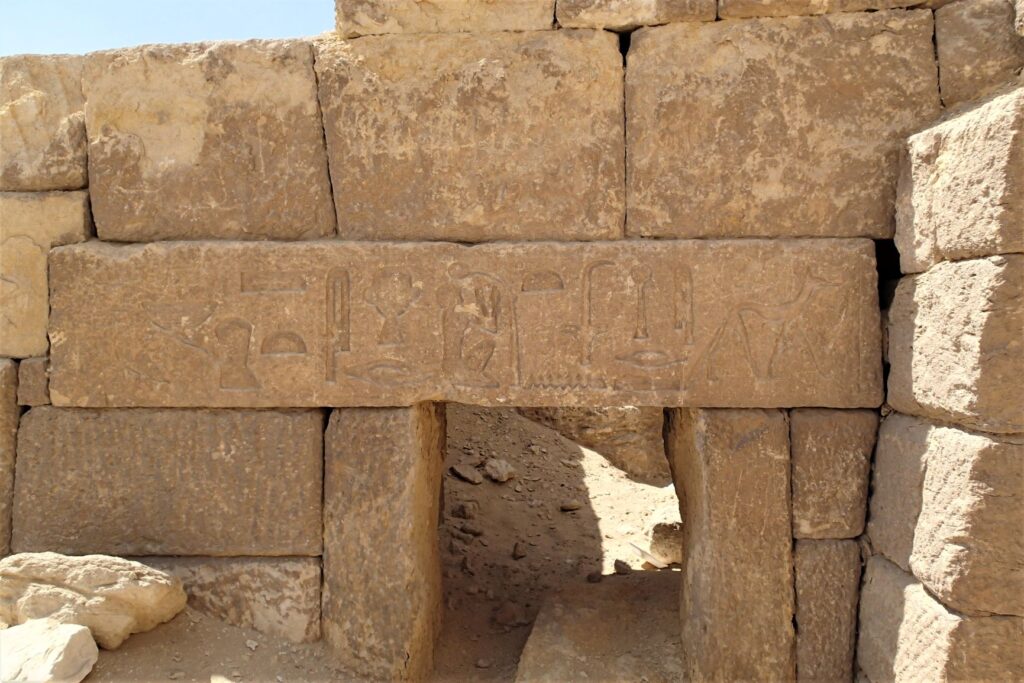

Seeing carved hieroglyphics in the museum was amazing, but finding them in situ, weathered and aged over thousands of years, was something else again.

Regardless of the fact that these underground structures have been robbed and pilfered for millennia, It was easy to let my imagination run away. What lay behind the locked or sealed entrances, deep in the stone beneath the Giza sands?
I had a great day hiding from other tourists and exploring the Giza Plateau. I even returned for a third day, and spent it discovering more ancient sites. The Pyramids of Giza are spectacular, and if you get the chance to visit one day, and you have the time, don’t rush the experience. After all, you’ve probably come a long way.
Visit the Egyptian Ministry of Tourism and Antiquities website for the Pyramids here
If you enjoyed this post, you may also enjoy Inside the Pyramids of Giza, Treasures of Luxor
Leave a Reply